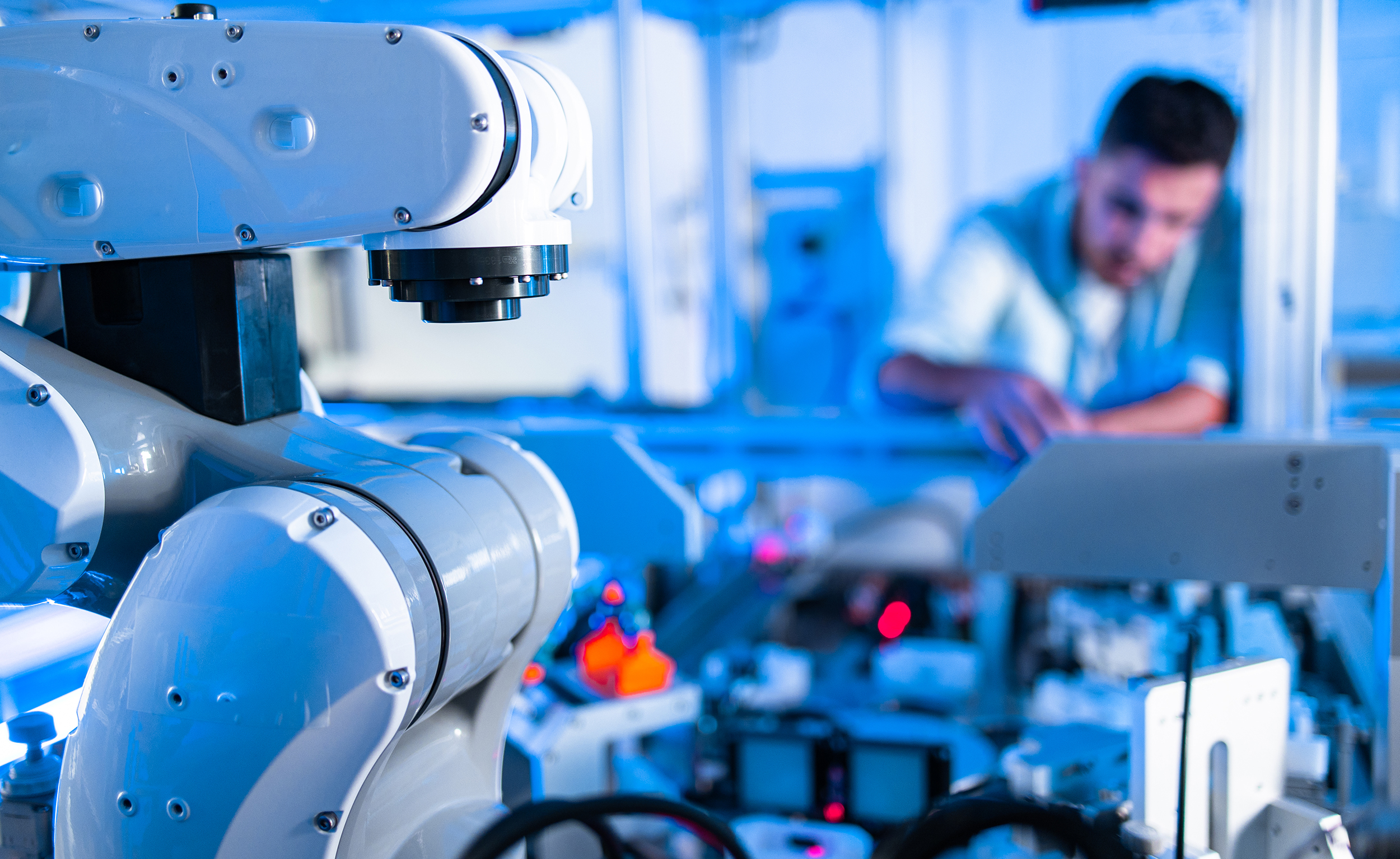Advanced factory automation will build on innovative technology infrastructure.
Factory automation is an established practice with a history of success, essential to the manufacturing sector. Modern factories employ robotic material handlers, vision systems, machine intelligence, and more to reliably provide high-quality products. Existing automation takes full advantage of the early waves of information technology, but as the digital transformation progresses, new digital capabilities will open up exciting opportunities in factory automation.
Innovations in bandwidth and connectivity, localized computing, and user-friendliness will boost the spread of the Industrial Internet of Things and make strides toward closing the manufacturing skill gap. Here are four emerging technologies that will provide the framework for next-generation factory automation.
1. Digital twins increase visibility and efficiency.
Connected sensors on equipment, part of the Industrial Internet of Things, are already collecting a wide array of data across supply networks and production lines. Increases in available computing power and the intelligence of modern analytics are driving the desire for ever-more-detailed information about business operations. The model of machines-as-a-service is also benefiting from more available data, allowing manufacturers to leverage the expertise of specialists who can now predict maintenance windows and spot equipment issues in real-time.
The next logical step is the development of digital twins for factory equipment and assets, and eventually for entire factories themselves. A digital twin is a software entity that mirrors a physical machine, one-for-one, providing real-time information about that equipment’s status and activity. With robust virtual environments, operators can use this information to gauge the health and productivity of the system, model changes with a minimum of risk, and even send instructions or updates to equipment.
2. Edge computing stores data where it’s needed most.
As data collection and artificial intelligence analytics become more widespread, so too does the need for processing power. Unifying and evaluating the data streams from IIoT sensors requires the bandwidth to communicate and the computing capacity to analyze it. Manufacturing demand is on the rise, and turnaround times are only getting quicker. One way to reduce latency between robots and the intelligent systems that control them is to locate data storage and computing power physically near to where it’s needed most.
Edge computing—data centers located at individual factories or near automated equipment—reduces the infrastructure needed to transmit sensor data to large, centralized repositories and cuts down on round-trip transmission time. It also places centers of machine intelligence closest to the equipment they serve, which narrows the scope of the individual AI’s responsibilities and decreases lag time in responses. Edge computing also ensures that critical factory functions aren’t isolated in any one platform, providing redundancy and increasing the overall system’s resilience in the face of outages or equipment failures.
3. 5G wireless supercharges connectivity.
The latest generation of wireless transmission is the fastest and highest bandwidth yet. Rapid transmission speeds and the ability to handle even more data streams will provide a springboard for the expansion of IIoT. With broad wireless capabilities available, the deployment of sensors will become even simpler, creating a virtuous cycle that will expand the value of intelligent analytics and provide greater visibility than ever into business operations.
Edge computing can also build off of the advantages that 5G provides. Localized processing requires reliable, high-bandwidth connectivity to communicate with parent systems and across available networked equipment. 5G allows edge-computing entities to send instructions and information at high speeds and with low latency. It also provides a more flexible backbone for production equipment, involving less physical infrastructure when expanding or changing operations. The ability to move equipment, scale up, and change configurations with ease will allow manufacturers to rapidly respond to shifts in demand.
4. Low-code programming platforms help span the skills gap
The spread of automation is changing the skills required for a manufacturing career. Personnel are increasingly working side-by-side with robots and programming their activities. Technological skills are becoming increasingly relevant to the manufacturing sector, which means that many current factory workers are seeking training, and many employers are confronting a skills gap.
Low-code programming platforms are designed to bridge this gap and present a unified portal for interacting with all the connected equipment in a factory. These platforms can communicate with devices from a variety of manufacturers, and translate the detailed instructions that robots require into a much more user-friendly and task-oriented interface. Workers can interact with low-code platforms more intuitively—they can control equipment, modify workflows, and adapt to changing business pressures quickly and reliably. And with a less steep learning curve, upskilling isn’t as much of a hurdle.
Digital business transformations provide a foundation for next-generation factories.
Factory automation has significantly impacted manufacturing on the basis of existing digital technologies. With businesses moving into an increasingly virtualized space, the stepping stones exist for automation to expand its capabilities even further. Robust connectivity, responsiveness, localized data storage, and streamlined user interfaces mean that future factories will be highly flexible and interactive.
Contact Eagle today to discuss leveraging the tools of digital transformation to implement or advance your manufacturing automation. Our experts stay on the leading edge of automation technologies and can help you find the right solutions for your business in a rapidly changing digital landscape.
![]() Connect With Eagle Technologies LinkedIn
Connect With Eagle Technologies LinkedIn
Eagle Technologies, headquarters in Bridgman, MI
Eagle builds the machines that automate manufacturing. From high-tech robotics to advanced product testing capabilities, Eagle offers end-to-end manufacturing solutions for every industry.

